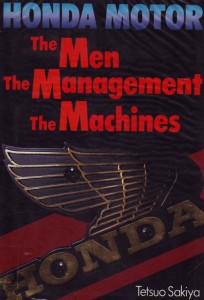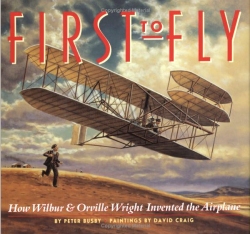Earlier this year I published my 15th book.
Now that might sound impressive, but you can do the same.
Yes, you!
How? Read on…
My first book, 21st Century Performance, was published in a very traditional manner in 2001. A print magazine publisher (who I’d done quite a lot of work for) suggested to me that he’d be interested in a book on car engines. I asked if that could be broadened to all things car performance, and he agreed.
I put a huge amount of work into the book – not just its content, but also working with its graphic designer. The production quality turned out to be excellent – the photo reproduction (off quality 35mm slides in those days) was outstanding and the general presentation of the hardback darned good.
I also think – and forgive my arrogance – that the content was very good. There are perhaps only one or two points in the whole book I’d now change – though of course I could now add a lot more to the content.
I negotiated a small up-front payment for the book and then sat back and waited for the royalties to roll in. I think that history records it as the best-selling automotive modification book ever published in Australia, but getting royalties out of the publisher wasn’t quite what I’d expected. Cheques arrived, but there were never any statements of sales, and the cheques were all round figures…
Maybe everything was above-board (I still don’t know), but it didn’t feel right.
And the royalty amount? I’d have to look it up but I think the book sold (15 years ago!) for around AUD$70 each copy – and I got AUD$3 a book. That’s a royalty of 4 per cent. (Incidentally, second-hand copies of the book now sell for up to US$350.)
I resolved then never to do another book on the basis of traditional publisher royalties.
My next book – in 2004 – was Performance Electronics for Cars, written with John Clarke for the publisher of Silicon Chip magazine, Leo Simpson. At that time, I was a major contributor to Silicon Chip and, while I subsequently decided that writing for Leo was the last thing I’d ever do on Earth, the book deal was fine. I asked for my normal up-front ‘article rate’ for each chapter of the book, and I was free to use the material elsewhere as I wished.
The book sold well – I think – and probably made the publisher a tidy profit. I got paid a decent amount, so we were all happy.
Time passed…. a lot of time. In fact, it was about early 2013 when I started thinking about book writing again. I’d just read a really interesting book (On a Cushion of Air: The Story of Hoverlloyd and the Cross-Channel Hovercraft) and the authors had self-published it. I wrote to one of the authors (Robin Paine) and asked him about the process. At the same time, I also wrote to a few other authors currently publishing tech stuff.
Self-publishing, it appeared, meant stumping up lots of cash to pay for everything, while the authors publishing through traditional publishers (like I’d done) did it more as a ‘labour of love’ than a money-making deal.
Then I did some more exploring… and discovered CreateSpace, Amazon’s publishing arm.
At first I couldn’t believe it – just upload a properly formatted pdf and they’d publish the book (complete with ISBN) and list it on Amazon. As people ordered, they’d print on demand (POD). There were no upfront costs, the author could set their own price (above a certain minimum that took into account the printing costs and some profit by the publisher), and royalties would be sent to the author monthly… And that was it.
To say it again: I just couldn’t quite believe it.
I developed a template (actually the biggest effort of the process) and put together a book from my published articles – it was Amateur Car Aerodynamics Sourcebook, published in 2013.
I followed that up with Inventors and Amateur Engineers Sourcebook, Home Workshop Sourcebook and DIY Car Electronic Modification Sourcebook, again all published in 2013.
I then wondered about a smaller book, and did DIY Testing of Car Modifications, also in 2013.
In 2014 came Tuning Programmable Engine Management, Hybrid and Electric Cars Amateur Sourcebook and Thoughts about Driving, Car Modifications and Life (the latter based on these columns – and bought by basically no-one!).
In 2015 I wrote DIY Suspension Development and then, putting on my other hat as a trainer in high-level writing, I produced Writing Effective Arguments: How to Write Strong Arguments in Business and Government.
Also in 2015, I wrote Using the Brilliant eLabtronics Modules!
This year, in 2016, I have written DIY Loudspeaker Building.
As a contributor not just to AutoSpeed but also to UK magazine Everyday Practical Electronics, I have lots of material available to me. That makes it easier to assemble books, although the effort in doing so cannot be understated.
But the advantage is amazing – it costs me nothing in terms of cash… absolutely nothing at all.
And the royalties can be set as you, the author, wish. Remember the royalty I got with 21st Century Performance – 4 per cent? I typically set my CreateSpace royalties at about 40 per cent (but it depends on the distribution channel that the customer buys through). Therefore, sales can be much lower for the same income.
The downsides? There’re no publisher promotions, no placing of books on booksellers’ shelves (they can order it to sell, but often they won’t). On the other hand, eBay sellers often list your book, and you can buy copies of your own book at a discount and flog them off wherever you want… but you soon tire of that.
Me? I am happy writing books (good for my CV!) and receiving royalty cheques that result in monthly trips to the bank (CreateSpace won’t do direct bank transfers to Australia, so they’re always mailed cheques).
Am I making squillions? Absolutely not (though I would if more people bought my books!).
Is it worth it? – unquestionably yes.
If you have a story to tell, I think it’s the way to go.
If you’re interested, see my Amazon listed books here.
- »
Comments
Comments Off on You can write books!

 Julian Edgar, 50, has been writing about car modification and automotive technology for nearly 25 years. He has owned cars with two, three, four, five, six and eight cylinders; single turbo, twin turbo, supercharged, diesel and hybrid electric drivelines. He lists his transport interests as turbocharging, aerodynamics, suspension design and human-powered vehicles.
Julian Edgar, 50, has been writing about car modification and automotive technology for nearly 25 years. He has owned cars with two, three, four, five, six and eight cylinders; single turbo, twin turbo, supercharged, diesel and hybrid electric drivelines. He lists his transport interests as turbocharging, aerodynamics, suspension design and human-powered vehicles.


